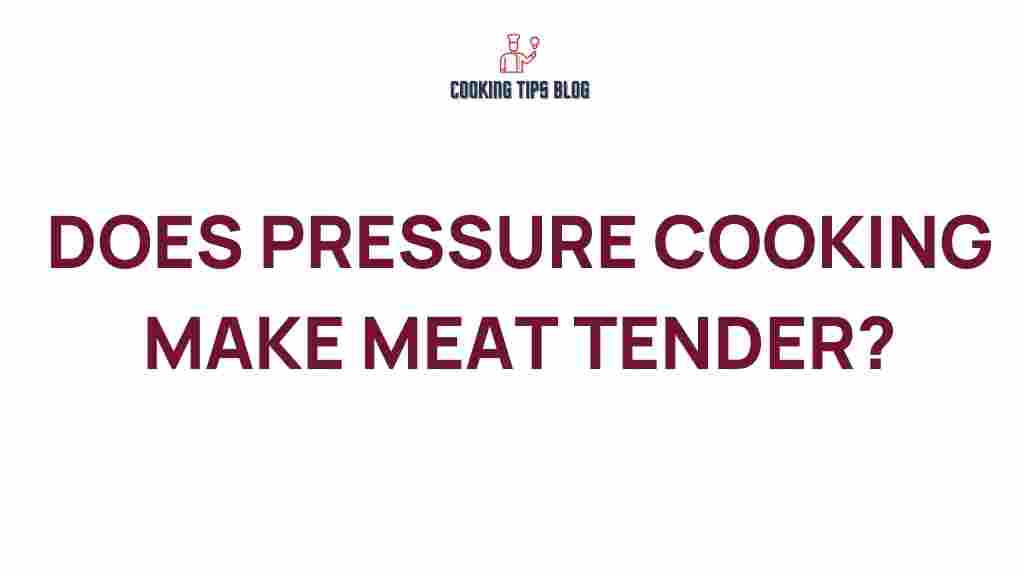The Secret Science: Does Pressure Cooking Really Make Meat Tender?
Pressure cooking is a culinary method that has gained immense popularity in recent years. With its ability to cook meals quickly and efficiently, it promises a tender and flavorful result, especially when it comes to meat. But does pressure cooking really make meat tender? In this article, we’ll explore the science behind this cooking technique, how it tenderizes meat, and provide you with tips and tricks for the best results.
Understanding Pressure Cooking
Before diving into the tenderizing effects, it’s essential to understand what pressure cooking entails. Pressure cooking uses steam and high pressure to cook food quickly. The pressure increases the boiling point of water, allowing food to cook faster while retaining moisture and flavor. Here’s how it works:
- High Pressure: The pressure cooker traps steam inside, creating a high-pressure environment that cooks food faster than conventional methods.
- Moisture Retention: The sealed environment prevents moisture from escaping, which is critical for tenderizing meat.
- Heat Distribution: The steam heats the food evenly, promoting consistent cooking.
How Pressure Cooking Makes Meat Tender
Meat tenderness is influenced by several factors, including the cut of meat, cooking time, and temperature. Pressure cooking excels in several of these areas:
- Collagen Breakdown: Many tougher cuts of meat contain collagen, a connective tissue that can be tough when cooked traditionally. Pressure cooking breaks down collagen into gelatin, leading to a more tender texture.
- Temperature Control: The consistent temperature achieved in a pressure cooker helps to cook meat evenly, avoiding the risk of overcooking or drying out.
- Time Efficiency: Cooking meat under pressure significantly reduces cooking time, allowing for tender results in a fraction of the time.
Step-by-Step Process of Pressure Cooking Meat
Now that we understand the science behind pressure cooking, let’s go through a step-by-step process for cooking meat to achieve maximum tenderness.
Step 1: Choose the Right Cut of Meat
Not all cuts of meat are created equal when it comes to pressure cooking. Tough cuts, such as:
- Chuck roast
- Brisket
- Pork shoulder
- Lamb shank
are ideal choices for pressure cooking, as they benefit significantly from the tenderizing effects of moisture and heat.
Step 2: Prepare the Meat
Before cooking, consider marinating or seasoning the meat. This not only enhances flavor but can also aid in tenderness. Here are a few marinade ingredients that work well:
- Acidic components (like vinegar, lemon juice, or yogurt)
- Oils (such as olive oil)
- Herbs and spices for added flavor
Step 3: Sear the Meat (Optional)
Searing the meat before pressure cooking can enhance the flavor. Heat a little oil in the pressure cooker on the sauté setting, add the meat, and brown it on all sides. This step is optional but recommended for richer flavor.
Step 4: Add Liquid
Liquid is essential for pressure cooking. It creates the steam needed to build pressure. Common liquids include:
- Broth or stock
- Water
- Wine or beer
Ensure you have at least one cup of liquid in the pressure cooker.
Step 5: Cooking Time
The cooking time varies based on the type and size of the meat. As a general rule, tougher cuts require longer cooking times. Here’s a quick reference:
- Beef chuck roast: 60-90 minutes
- Pork shoulder: 60-75 minutes
- Brisket: 75-90 minutes
Always refer to your pressure cooker’s manual for specific guidelines.
Step 6: Natural vs. Quick Release
After the cooking time is complete, you can either allow the pressure to release naturally or use the quick release method. Natural release is often better for larger cuts of meat as it allows for more tender results.
Troubleshooting Tips for Pressure Cooking Meat
While pressure cooking is generally straightforward, you may encounter some issues. Here are some troubleshooting tips:
- Meat is Tough: If the meat is still tough after cooking, it may need more time. Return the pressure cooker to high pressure for an additional 10-15 minutes.
- Too Much Liquid: If you find the liquid levels too high after cooking, consider reducing it by sautéing without the lid after releasing pressure.
- Flavor is Lacking: Enhance flavor by adding more spices or seasonings before cooking or by making a sauce with the cooking liquid after.
Conclusion: The Verdict on Pressure Cooking
So, does pressure cooking really make meat tender? The science supports it! Pressure cooking effectively breaks down tough connective tissues, retains moisture, and enhances flavors, making it an excellent method for tenderizing meat. Whether you are looking to prepare a hearty stew or a succulent roast, pressure cooking can deliver tender, flavorful results in a fraction of the time compared to traditional methods.
If you’re interested in exploring more about cooking techniques, check out this comprehensive guide to cooking methods. For more specific pressure cooking recipes and tips, you can also visit Pressure Cooking Today.
So dust off your pressure cooker and start creating delicious, tender meat dishes today!
This article is in the category Tools and created by Cookingtipsblog Team
